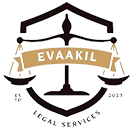Introduction
Employee benefits and rights constitute the bedrock of a fair and harmonious workplace. In the dynamic realm of employment, grasping and ensuring these aspects are crucial for cultivating a positive and productive work environment. This essay embarks on a comprehensive examination of employee benefits and rights, delving into their significance, the legal frameworks governing them, and the evolving landscape in contemporary workplaces.
Importance of Employee Benefits
Employee benefits are a vital component of the overall compensation package offered by employers. Beyond the basic salary, these perks contribute significantly to job satisfaction, employee well-being, and organizational success.
- Attraction and Retention Offering attractive benefits is instrumental in attracting top talent and retaining valuable employees. In a competitive job market, prospective employees often weigh the benefits package alongside the salary when considering job offers.
- Job Satisfaction and Productivity Comprehensive benefits contribute to job satisfaction, which, in turn, enhances productivity. Employees who feel valued and supported by their employers through benefits such as healthcare, retirement plans, and wellness programs are likely to be more engaged in their work.
- Health and Well-being Many employee benefits focus on health and well-being, including health insurance, wellness programs, and mental health support. Prioritizing employee health not only fosters a positive work culture but also reduces absenteeism and healthcare costs for employers.
- Financial Security Benefits like retirement plans, stock options, and life insurance provide employees with financial security. Knowing that their employer cares about their long-term well-being enhances the employees’ loyalty and commitment to the organization.
Legal Frameworks for Employee Rights
Employee rights are protected by a myriad of laws and regulations designed to ensure fair treatment, non-discrimination, and the provision of a safe and respectful workplace environment.
- Equal Employment Opportunity (EEO) Laws EEO laws prohibit discrimination based on factors such as race, gender, age, religion, or disability. These laws ensure that all employees have an equal opportunity for employment and advancement.
- Fair Labor Standards Act (FLSA) The FLSA establishes minimum wage, overtime pay eligibility, recordkeeping, and child labor standards. It ensures that employees are fairly compensated for their work and prevents exploitative labor practices.
- Occupational Safety and Health Act (OSHA) OSHA mandates a safe and healthy working environment by setting standards and regulations for workplace safety. Employers are required to provide a hazard-free workplace and comply with OSHA standards to protect the well-being of their employees.
- Family and Medical Leave Act (FMLA) The FMLA allows eligible employees to take unpaid leave for specific family or medical reasons while ensuring job protection and continuation of health insurance coverage. It provides a balance between work and personal responsibilities.
- National Labor Relations Act (NLRA) NLRA protects the rights of employees to engage in collective bargaining, form or join labor unions, and participate in concerted activities for mutual aid and protection. It fosters a balance of power between employees and employers.
Evolving Landscape of Employee Benefits
The landscape of employee benefits is continually evolving, reflecting societal changes, employee expectations, and the competitive nature of the job market.
- Flexible Work Arrangements With the advent of technology and changing work cultures, flexible work arrangements such as remote work and flexible hours have become increasingly popular. These arrangements contribute to work-life balance and are considered valuable benefits by many employees.
- Wellness Programs Employers are placing greater emphasis on employee wellness programs, recognizing the impact of physical and mental health on job performance. Wellness initiatives may include fitness programs, stress management resources, and mental health support services.
- Student Loan Assistance As student loan debt becomes a significant financial burden for many employees, some organizations offer student loan assistance programs. This benefit helps attract and retain young talent while addressing a pressing financial concern for employees.
- Paid Parental Leave Recognizing the importance of family and work-life integration, some companies are expanding parental leave benefits. Paid parental leave allows employees to balance career and family responsibilities without compromising their financial stability.
- Professional Development Opportunities Many employees value opportunities for professional growth and skill development. Employers are responding by offering training programs, tuition reimbursement, and mentorship initiatives to enhance the career progression of their workforce.
Employee Rights in the Digital Age
As the workplace adapts to technological advancements and changing work dynamics, the rights of employees in the digital age have come under increased scrutiny.
- Data Privacy and Security In an era where personal and professional information is often stored electronically, employees have the right to expect privacy and security of their data. Employers must adhere to data protection laws and implement safeguards to protect employee information.
- Remote Work Considerations The rise of remote work brings forth new considerations for employee rights. Clear policies on remote work expectations, reimbursement for expenses, and the right to disconnect after work hours are crucial aspects that organizations must address.
- Work-Life Balance The boundary between work and personal life has become more blurred in the digital age. Employees have the right to advocate for work-life balance, and employers must respect these boundaries to prevent burnout and maintain employee well-being.
- Freedom of Expression With the proliferation of social media, employees may engage in online discussions that touch on work-related matters. Balancing the right to freedom of expression with the employer’s interests in maintaining a positive work environment is an evolving challenge.
Conclusion
In the complex tapestry of employment, employee benefits and rights stand as pillars that uphold fairness, equity, and a healthy work environment.
As we navigate the intricacies of legal frameworks, evolving landscapes, and digital transformations, it becomes imperative for employers to continually reassess and enhance the benefits and rights afforded to their workforce.
Striking this balance not only leads to a more satisfied and productive workforce but also establishes organizations as responsible and ethical contributors to the evolving world of work.










